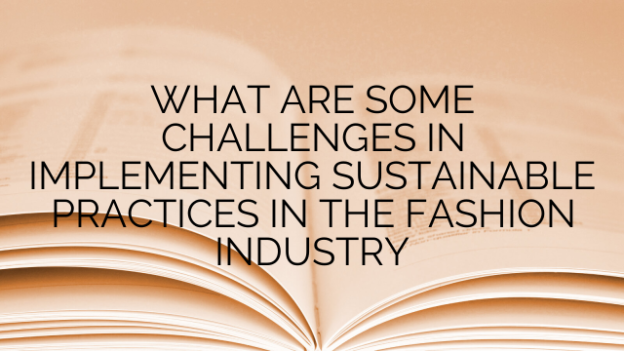The fashion industry faces significant challenges in transitioning to more sustainable practices. One of the main issues is the fast fashion business model that dominates the industry. Fast fashion refers to inexpensive clothing collections that mimic current luxury fashion trends. This business model relies on producing large quantities of clothing cheaply and quickly to keep up with constantly changing trends.
This fast pace of design, production, and consumption leads to immense pressure on natural resources and the environment. Cotton and polyester, which account for over half of all fabrics used in clothing, require large amounts of water, chemicals, fertilizers and dyes during production. Indigo dye alone, widely used for denim, requires over 7,000 liters of water per pair of jeans. When production quantities are in the billions of items each year across many global brands and retailers, the scale of environmental impact from resource and chemical usage is enormous.
Fast fashion encourages consumerism and trends that last only a season before being replaced. This continual cycle of low-cost disposable clothing results in massive amounts of textile waste. It is estimated that the equivalent of one garbage truck of textile waste ends up in landfills every second globally. Many of these textiles, especially synthetic fabrics like polyester, do not biodegrade and persist in the environment for centuries. Adding to this, there are often challenges in effectively sorting, collecting and recycling post-consumer textile waste at scale.
Shifting to more sustainable materials presents another steep challenge. While natural fabrics like organic cotton have lower environmental impacts than synthetics during production, their yields per acre are generally lower and costs of certification are higher. Transitioning large-scale supply chains completely away from conventional cotton or non-renewable petroleum-based synthetics like polyester towards more sustainable options is technically difficult and expensive in the short-term.
Labor practices throughout the long and complex global supply chains also tend to undermine sustainability. Most fashion companies source materials and manufacture clothing through multiple levels of contractors across low-cost countries. This extensive outsourcing makes auditing and ensuring ethical, safe and environmentally responsible working conditions down the supply chain a persistent struggle. Issues around poor labor standards, unpaid overtime work, and lack of living wages still plague the industry.
Transparency into the complex multinational supply networks is another major sustainability roadblock. Most consumers have little visibility into where and how their clothes were actually made. Greenwashing, where companies overstate their sustainability credentials or hide poor practices, remains rampant without open verification of sustainability reports, goals and certifications. Gaining full supply chain transparency demands coordinated efforts across many independent actors lacking shared infrastructure and incentives.
Pricing clothing sustainably also poses economic challenges. Transitioning to higher costs for organic materials, living wages for workers, environmental impact mitigation strategies, etc. would require significant price increases for many clothing items consumers have grown accustomed to paying little for. Yet raising prices much could reduce already tight consumer budgets and price many sustainable brands out of the mass market. Finding the right price points and business models to both drive sustainability gains and remain financially viable is a complex balancing act.
Embedding sustainability deeply into corporate culture and strategies demands substantial time, resources and organizational change. For many legacy fashion brands and retailers established around fast linear business models, transitioning their entire design, sourcing, manufacturing, distribution and retail operations to operate circularly is incredibly difficult. It necessitates long-term strategic investments that may not provide returns for 5-10 years or more – challenging traditional business timelines. Changing entrenched organizational mindsets, incentives and goals is equally hard.
Regulations and policy do not yet fully support or require the industry to internalize sustainability costs. Many environmental and social impacts of fashion production remain externalities not priced into clothing. Harmonized global standards on issues like chemical restrictions, emissions caps, living wage policies or circular clothing targets are still lacking. While certain jurisdictions are starting to introduce relevant regulations, a coordinated policy push is needed to really drive systemic change across the entire fragmented global industry.
The fast fashion business model, complexity of supply chains, challenges in materials and labor sustainability, lack of transparency, pricing difficulties, barriers to organizational change, and absence of supportive regulations all significantly hinder fashion’s transition to widespread sustainable practices at present. Overcoming these entrenched issues demands coordinated multi-stakeholder action and cross-sector collaboration over many years. The scale of impact also means both innovation and evolution of industry structures are required for meaningful progress.




